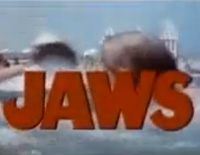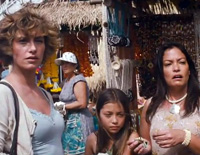
 Liam Hemsworth will send off Jennifer Lawrence to battle their peers in The Hunger Games.
Liam Hemsworth will send off Jennifer Lawrence to battle their peers in The Hunger Games.
 Nothing makes moviegoers squirm like watching children die on the big screen. As The Hunger Games--in which 24 children are forced to fight to the death--hits theaters on March 23, will it prove too much for viewers? Film historian Joseph McBride talks us through the flicks that have successfully depicted this sensitive subject matter.
Nothing makes moviegoers squirm like watching children die on the big screen. As The Hunger Games--in which 24 children are forced to fight to the death--hits theaters on March 23, will it prove too much for viewers? Film historian Joseph McBride talks us through the flicks that have successfully depicted this sensitive subject matter.

Sabotage, 1936 Director: Alfred Hitchcock In the film, an exploding bomb kills a young boy, a scene Hitchcock later called his greatest mistake (though the film is considered a classic). It inspired his "bomb theory," which suggests that a bomb, when introduced to the plot, must never go off: "[The audience will] get angry," he said, "because you haven't provided them with any relief."

Jaws, 1975 Director: Steven Spielberg Spielberg was going for the emotional jugular when he chose to show a young boy attacked and killed by a shark in the now-classic film. "It was considered ultraviolent in its day," McBride says, but notes that it was a necessary plot point, not just for show. "It forces Roy Scheider's character to realize that he is failing his community."

Hereafter, 2010 Director: Clint Eastwood With a focus on mortality and the afterlife, the movie features a character struggling to accept her survival of a tsunami, in which she was unable to save the life of a small girl. "Eastwood asks the audience to consider the possibility of psychic connections," says McBride, "but he does it in a human way rather than proselytizing."
A version of this article appears in the March 2012 issue of Fast Company.